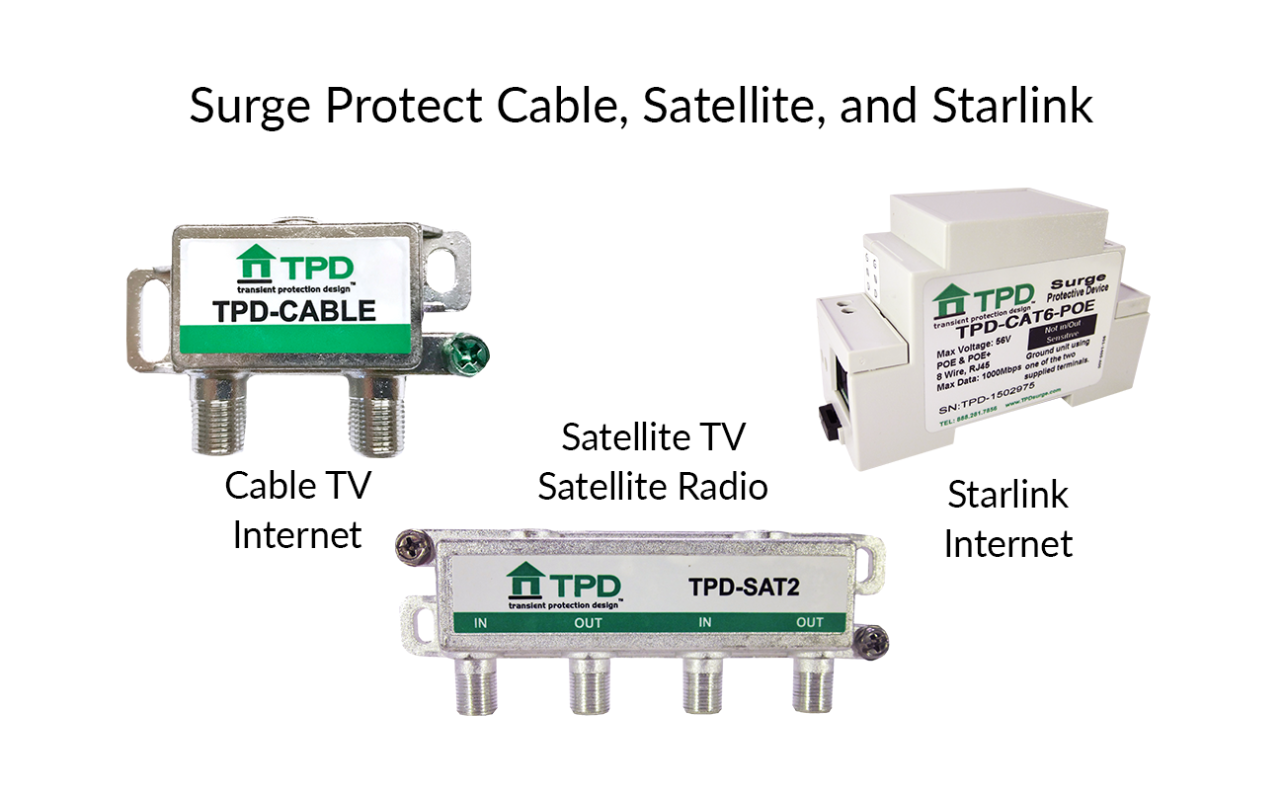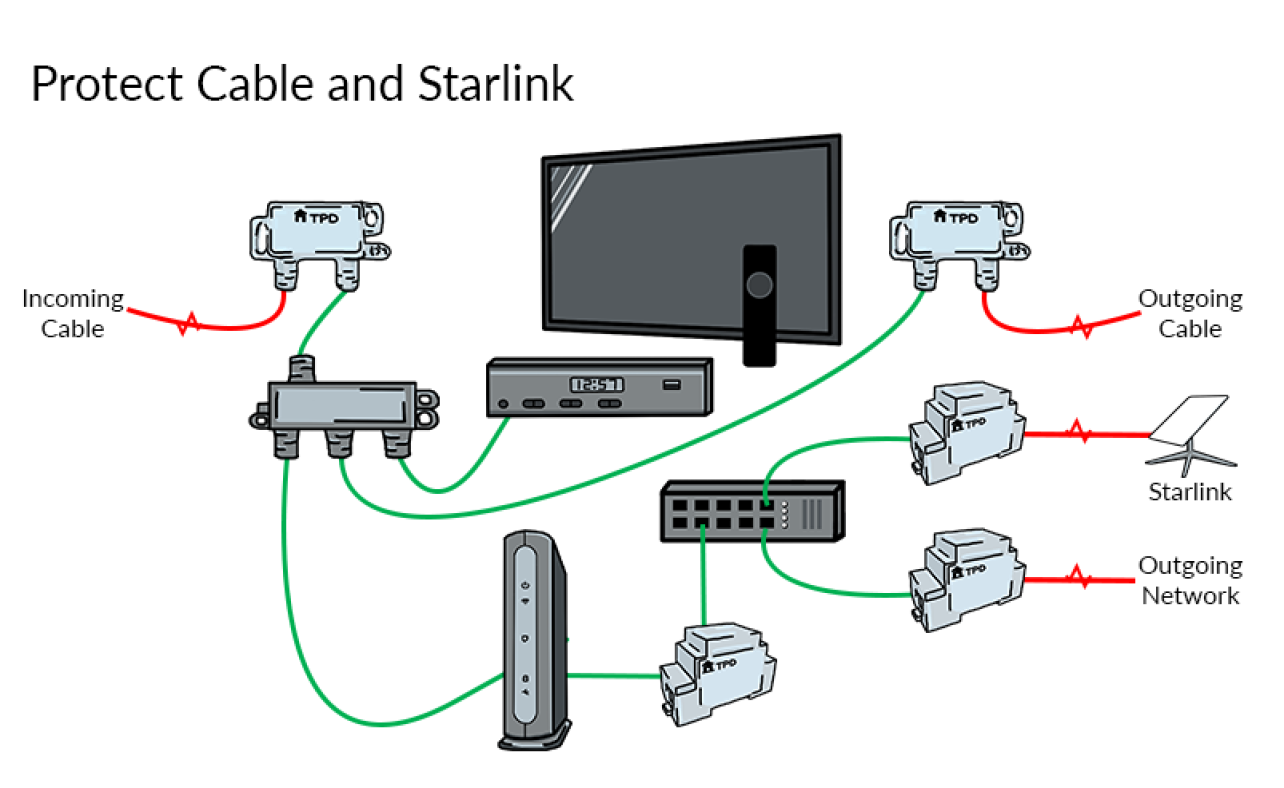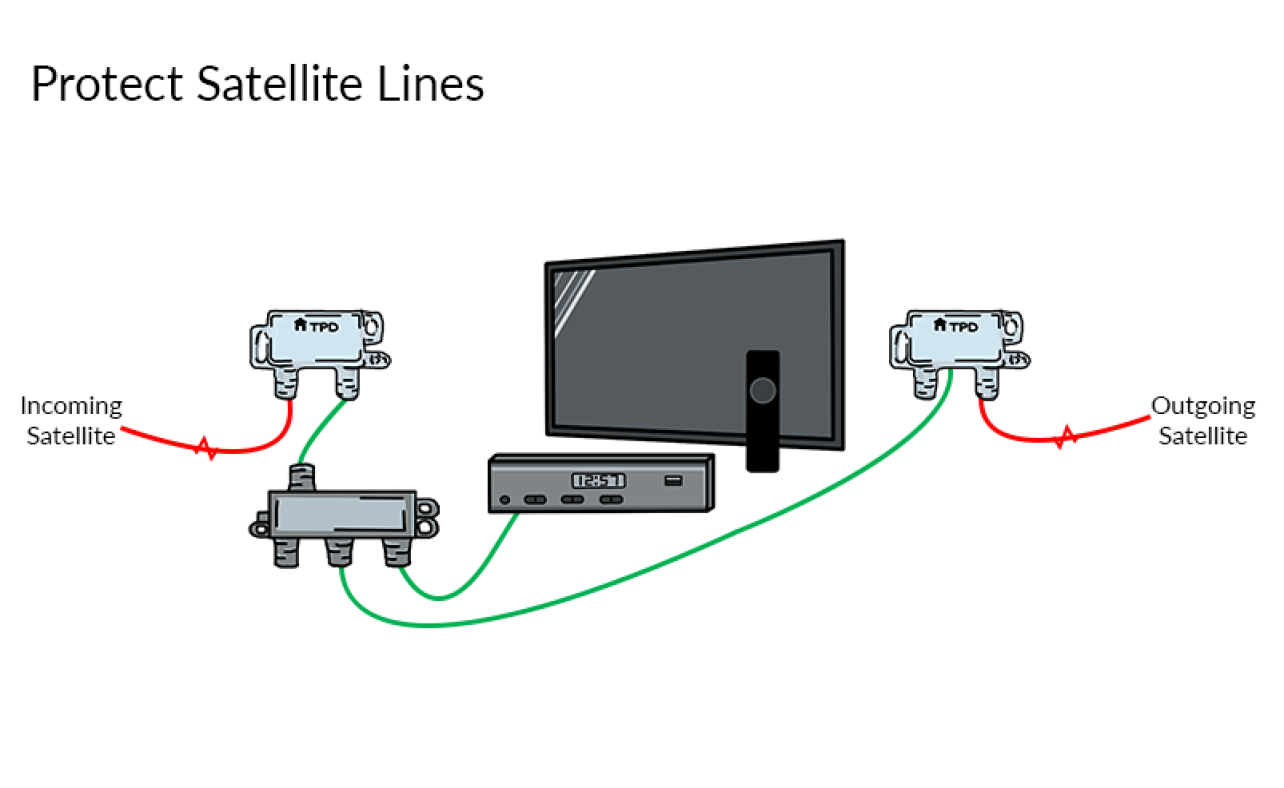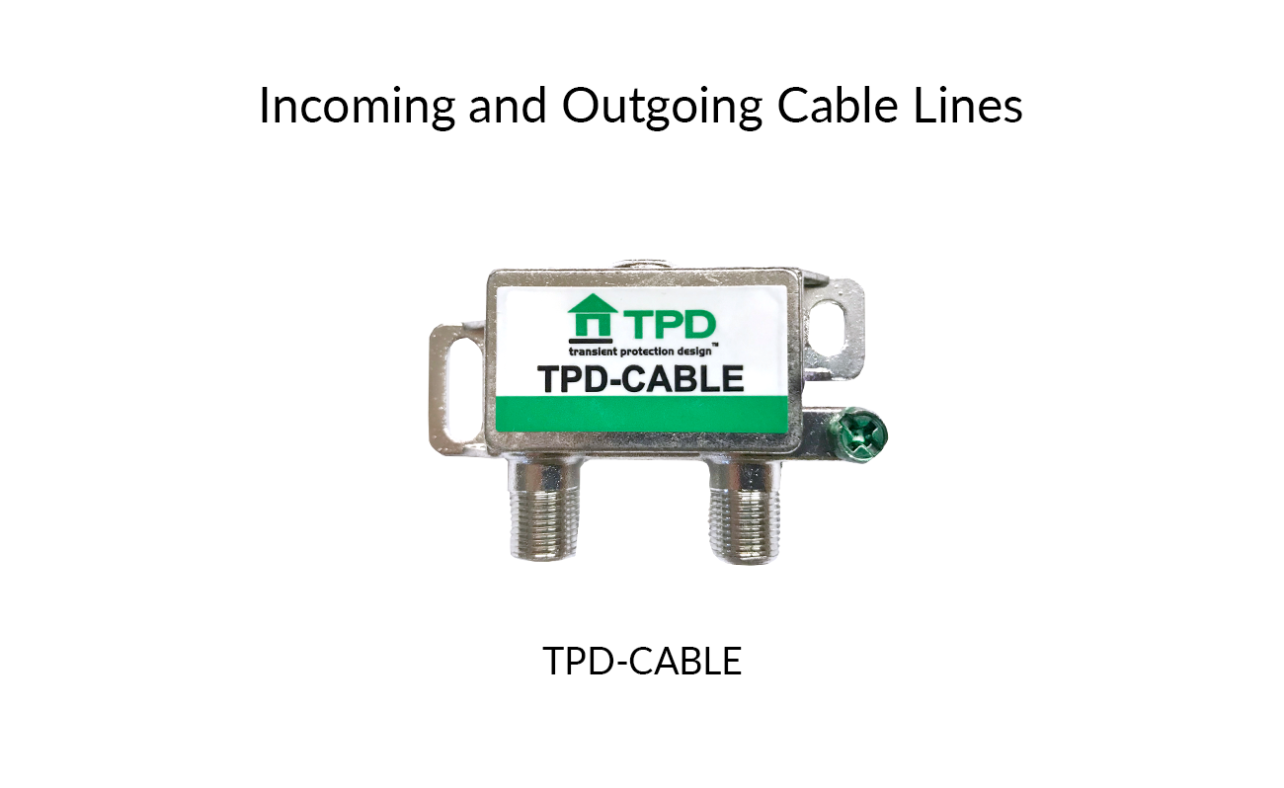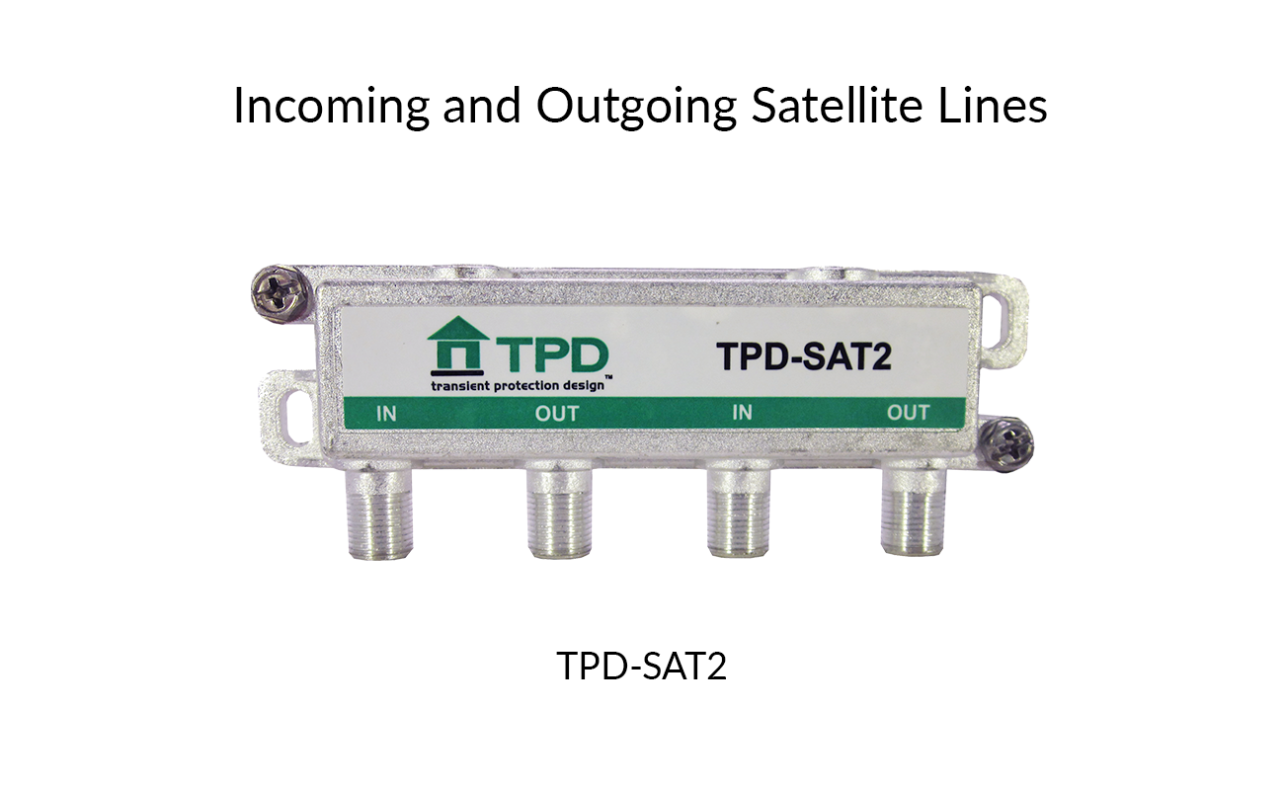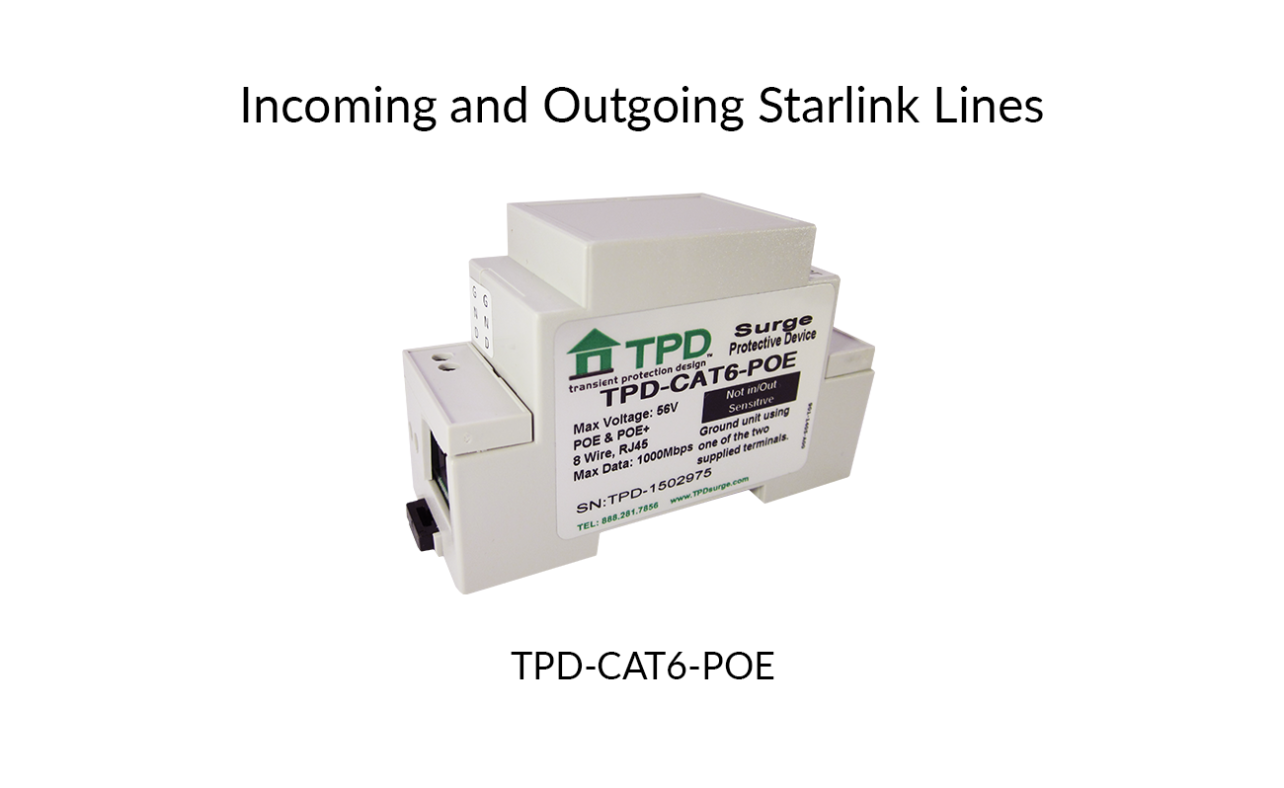Cable Satellite and Starlink Surge Protection
Cable and internet surge protection by TPD is your answer for surge protecting and bonding incoming cable, satellite, and Starlink feeds. By surge protecting and bonding these connections with the electrical system ground, we establish a consistent potential ground, effectively eliminating ground loop issues. Our approach adheres to current NEC codes and anticipates future standards, ensuring a dependable system with minimal risk of damage, noise or interference compromising your video and audio signals.
TPD eliminates transients & surges
which account for 85% to 95% of all
power issues, being the most common
and significantly the most damaging.
How To Surge Protect Cable, Satellite, and Starlink
Surge Protect Incoming and Outgoing Cable Lines: TPD-CABLE
This will assure that cable lines are surge protected and bonded to electrical ground as they enter or leave the building.
Surge Protect Incoming and Outgoing Satellite Lines: TPD-SAT2
This will assure that satellite lines are surge protected and bonded to electrical ground as they enter or leave the building.
Surge Protect Incoming Starlink Lines: TPD-CAT6-POE
This will assure that Starlink lines are surge protected and bonded to electrical ground as they enter or leave the building.
A Starlink to RJ45 adapter may be needed for connection.
The Importance of Cable, Satellite, and Starlink System Surge Protection
Uninterrupted Signal and Connectivity
Incoming data feeds are the gateway to the digital world, powering daily activities and business operations. TPD surge protection products shield against electrical damage, ensuring uninterrupted connectivity. Whether it's in your home or a commercial setting, surge protection improves reliability of access to online services.
Protecting Valuable Equipment
Data systems encompass valuable components, including satellite dishes, modems, and data servers. Surge-induced damage can lead to costly repairs or replacements of these components. TPD surge protection reduces the risk of electrical damage and extends the lifespan of your equipment in both residential and commercial applications.
Data Security and Privacy
In both residential and commercial environments, disruptions in connectivity can lead to data loss and compromised security. TPD surge protection ensures data security and safeguards privacy in both contexts.
Cost Savings
Repairing or replacing equipment can be financially burdensome. TPD surge protection helps defend against electrical damage, mitigating the risk of unexpected repair expenses. Whether it's optimizing your home's internet setup or ensuring uninterrupted business operations, surge protection contributes to cost savings.
Operational Continuity
In commercial settings, data systems are integral to various operations, including communication, data management, and e-commerce. Surge-induced failures can disrupt business activities, impacting customer satisfaction and revenue. TPD surge protection plays a pivotal role in maintaining operational continuity, ensuring seamless connectivity for both businesses and clients.
Environmental Resilience
Internet equipment is often exposed to power fluctuations and surges. Surge-induced equipment failures can result in increased electronic waste. TPD surge protection helps maintain the resilience of internet equipment, aligning with sustainability goals and ensuring the reliability of internet systems.

